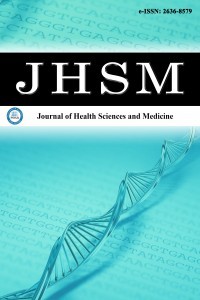1.
Papazian L, Klompas M, Luyt, CE. Ventilator-associated pneumonia in adults: a narrative review. Int Care Med. 2020;46(5):888-906.
2.
Fernando SM, Tran A, Cheng W, et al. Diagnosis of ventilator-associated pneumonia in critically ill adult patients-a systematic review and meta-analysis. Int Care Med. 2020;46(6):1170-1179.
3.
Walaszek M, Kosiarska A, Gniadek A, et al. The risk factors for hospital-acquired pneumonia in the intensive care unit. Przegl Epidemiol. 2016; 70(1):107-110.
4.
Kalil AC, Metersky ML, Klompas M, et. al. Management of adults with hospital-acquired and ventilator-associated pneumonia: 2016 clinical practice guidelines by the Infectious Diseases Society of America and the American Thoracic Society. Clin Infect Dis. 2016;63(5):e61-e111.
5.
Augustyn B. Ventilator-associated pneumonia: risk factors and prevention. Crit Care Nurse. 2007;27(4):32-40.
6.
Kendall H, Abreu E, Cheng AL. Serum albumin trend is a predictor of mortality in ICU patients with sepsis. Biol Res Nurs. 2019;21(3):237-244.
7.
Akirov A, Masri-Iraqi H, Atamna A, Shimon I. Low albumin levels are associated with mortality risk in hospitalized patients. Am J Med. 2017; 130(12):1465.e11-1465.e19.
8.
Aziz M, Fatima R, Lee-Smith W, Assaly R. The association of low serum albumin level with severe COVID-19: a systematic review and meta-analysis. Crit Care. 2020;26;24(1):255.
9.
Suetrong B, Walley KR. Lactic acidosis in sepsis: it’s not all anaerobic: implications for diagnosis and management. Chest. 2016;149(1):252-261.
10.
Gharipour A, Razavi R, Gharipour M, Mukasa D. Lactate/albumin ratio: an early prognostic marker in critically ill patients. Am J Emerg Med. 2020;38(10):2088-2095.
11.
Shin J, Hwang SY, Jo IJ, et al. Prognostic value of the lactate/albumin ratio for predicting 28-day mortality in critically ILL sepsis patients. Shock. 2018;50(5):545-550.
12.
Kong T, Chung SP, Lee HS, et al. The prognostic usefulness of the lactate/albumin ratio for predicting clinical outcomes in outof-hospital cardiac arrest: a prospective, multicenter observational study (koCARC) study. Shock. 2020;53(4):442-451.
13.
Guo W, Zhao L, Zhao H, et al. The value of lactate/albumin ratio for predicting the clinical outcomes of critically ill patients with heart failure. Ann Transl Med. 2021;9(2):118.
14.
Gök A, Kasapoğlu US, Acun Delen L, Özmen F, Banazili S. Lactate/albumin ratio as a prognostic factor for short-time mortality in critically ill patients with coronavirus disease-2019. Turk J Intensive Care. 2021;19(Suppl 1):62-72.
15.
Magill SS, Klompas M, Balk R, et al. Developing a new, national approach to surveillance for ventilator-associated events. Am J Crit Care. 2013;22(6):469-473.
16.
Ruchita K, Sourya A, Samarth S, et al. Serum lactate-albumin ratio: soothsayer for outcome in sepsis. Cureus. 2023;15(3):e36816.
17.
Jia Liang Z, Hui L, Li W, et al. Association of lactate to albumin ratio and bicarbonate with short-term mortality risk in patients with acute myocardial infarction. BMC Cardiovascular Disorders. 2022;22(1):490.
18.
Stijn B, Despoina K, George D, et al. Prevalence, risk factors, and mortality for ventilatorassociated pneumonia in middle-aged, old, and very old critically ill patients*. Crit Care Med. 2014;42(3):601-609.
19.
Sen Z, Nan C, Liansheng M. Lactate-to-albumin ratio: a promising predictor of 28-day allcause mortality in critically Ill patients with acute ischemic stroke. J Stroke Cerebrovasc Dis. 2024;33(6):107536.
20.
Guo-Guo Z, Jia-Hui H, Qi Y, et al. Lactate-to-albumin ratio is associated with in-hospital mortality in patients with spontaneous subarachnoid hemorrhage and a nomogram model construction. Front Neurol. 2022; 17(13):1009253.

